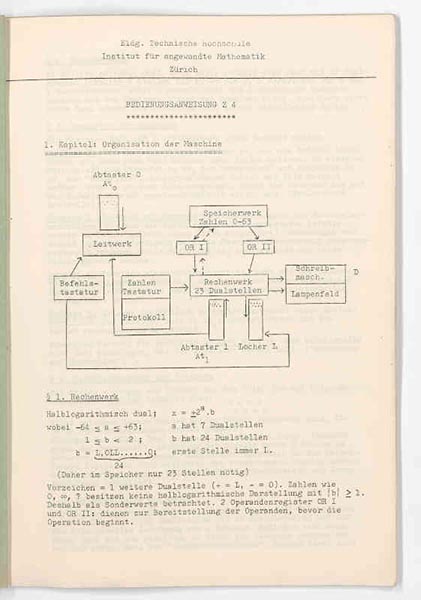Your Friday Moment of Joy (Division)
as I think of all the places I go with really ugly signage (tape etc) I feel like offering a "COVID Visual audit" is in order #printchat
— Kelly Mallozzi (@SuccessInPrint) September 30, 2020
Amen!
Bottom’s Up
It was perhaps inevitable, but, says the BBC, “Fashion brands design ‘waist-up’ clothing for video calls.”
A “waist-up” focus has been noticed at both Milan and London Fashion Weeks, with detailed necklines and relaxed trousers.
Prada placed its logo near the collars of its tops, and featured large coats pulled around shoulders like a blanket.
Most of us of course wear Prada on our Zoom calls.
It said it was not inspired by Zoom, but by the “contemporary human relationship with technology”.
Does that relationship involve not wearing pants? (Don’t answer that.)
At Milan Fashion Week, designers also seemed influenced by remote working, with a trend for flatter shoes with a small heel, elasticated trousers, matching silk sets and pyjamas.
“I’ve never seen so many elastic and drawstring waists in my life,” said Lauren Indvik, fashion editor at the Financial Times. “All the stylists are talking about ‘waist-up’ dressing, because that’s all everyone sees these days.”
New Masks
Imagine a reusable face mask that protects wearers and those around them from SARS-CoV-2, is comfortable enough to wear all day, and stays in place without frequent adjustment. That’s what researchers at Georgia Tech have designed and are making available to everyone. Get yours made today!

Christopher Moore, Georgia Tech
Not so Fast
Thanks to the pandemic, I only have half my usual atonement load for Yom Kippur.
— J. Elvis Weinstein (@JElvisWeinstein) September 28, 2020
Graphene Power!
Is it a good week for graphene news? It’s always a good week for graphene news! Graphene offers huge potential for the future of batteries.
The potential for improved performance and life cycle, fast charging and enhanced safety have proven to be enough of an incentive to inspire active study into graphene-based batteries, with many researchers and companies working globally to develop this energy Holy Grail.
Here are some of the latest developments.
Tool O’Knuckles
Following several injuries Brazilian pianist João Carlos Martins lost the ability to move his fingers.
— Rex Chapman???? (@RexChapman) September 28, 2020
But after more than 20-years of being unable to play — a pair of “bionic” gloves are bringing him back.
He’s crying. I’m crying. You’re crying...pic.twitter.com/X7g6qU4zDR
Frankly Speaking
The virtual Xplor 2020 opened this week, with a very good keynote by Antoine Dupont and while it (and Xplor in general) deserves (and will receive) a proper write-up, Dupont spoke about various “disruptions” in the relationship between marketers and those being marketed to, and mentioned how Costco is representative of a disruption caused by consumer-driven commerce—they are a retail outlet that has no advertising and you have to pay to shop there, and yet they are wildly successful.
Anyway, for our more frivolous purposes here at Around the Web, that Costco reference reminded us that we had recently come across a two-year-old storyabout a keynote given by CostcoCEO W. Craig Jelinek, and an anecdote about Costco’s famous $1.50 hot dog and soda.
“I came to (Jim Sinegal, Costco co-founder) once and I said, ‘Jim, we can’t sell this hot dog for a buck fifty. We are losing our rear ends.’ And he said, ‘If you raise the effing hot dog, I will kill you. Figure it out.’”
Interestingly, what Costco ended up doing was building their own hot dog manufacturing plant. They eventually had to build another to keep up with demand for hot dogs.
Scorigami Update
For those keeping score (as it were), last week’s NFL games saw one more Scorigami*:
SF 36 - 9 NYG
— Scorigami (@NFL_Scorigami) September 27, 2020
Final
That's Scorigami!! It's the 1056th unique final score in NFL history.
*Scorigami is a final score never before achieved in an NFL game.
Pressing Letters
As exciting as new, cutting-edge digital printing technologies can be, sometimes it just lacks the romance of older technologies like letterpress. Field Notes has released the Fall edition of its quarterly journal: “United States of Letterpress” features the work of nine independent letterpress shops from across the country. They add: “This series demonstrates a wide array of craftsmanship, ingenuity, and love for the age-old and tactile process of letterpress printing.”
Get a preview in this video:
Trouble Down Below
I can't get on with footnotes. Having two conversations at once. Or trying to have one, and constantly being interrupted by the bloke with the parmesan.
— Hugh Laurie (@hughlaurie) September 27, 2020
Missing Manual
Vice this week reported a major find: “The Long Lost Manual for the World's Oldest Preserved Computer Has Been Found.” Our first thought was that Frank Romano had it in the Museum of Printing, but actually the manual turned up in a pile of documents in Zürich, Switzerland.
Anyway, the computer in question—the Zuse Z4, built in 1945 and currently residing at the Deutsches Museum in Munich—has a bit of a checkered history in that it was the last computer that the Nazis built, but it is an important artifact in the history of computing as it is the oldest preserved digital computer in the world.
Built in 1945, the Z4 is one of those machines that takes up a whole room, runs on magnetic tapes, and needs multiple people to operate. Today it sits in the Deutsches Museum in Munich, unused. Until now, historians and curators only had a limited knowledge of its secrets because the manual was lost long ago.
...
At the time, the Z4 was a powerful machine. It could run addition and subtraction in half a second, multiplication in 3 seconds, and perform division and square roots in six seconds. It averaged 1,000 mathematical operations an hour.
Konrad Zuse had already been the inventor of the world’s first programmable computer, the Z3, and he had finished the Z4 in Göttingen just in time to evacuate it before the Allies arrived. The Nazis had wanted Zuse and the Z4 to help build V1 and V2 rockets, but “Zuse refused and escaped South to the small German town of Bad Hindelang. He hid the computer in a barn and waited out the war selling woodcuts to local farmers and American troops.”
After the end of the World War II, Zuse became regarded as the father of modern commercial computers and the Z4 was his flagship machine.
...
Zuse invented more computers but never reached the heights of commercial success his successors would hit. He died in 1995.

Good thing the manual hadn’t been a PDF. It would have been deleted decades ago.
Crackers
Sick of this cancel culture pic.twitter.com/2WiopbyxYA
— Tiernan Douieb (@TiernanDouieb) September 29, 2020
Eight Arms to Read With
The town of Amherstburg, Ontario, has an annual open air festival called the “Uncommon Festival” and for the festival, the River Bookshop in Amherstburg, Ontario, installed a set of temporary inflatable tentacles to provide the illusion that a giant purple octopus has taken over the shop. Pretty uncommon.

The CBC has more about the River Bookshop and their plans before...you know...
Nature Red in Tooth and Claw
Nature remains displeased. https://t.co/RzKqyHgiHm
— Charles P. Pierce (@CharlesPPierce) September 26, 2020
Also, too: In Texas, feral hogs are going wild.
Take Only Pictures, Leave Only Footprints
This is nine kinds of awesome. Says the New York Times:
Officials in Thailand had an unorthodox approach to deal with visitors who left a tent filled with litter in a national park: mail the trash to the offenders.
The country’s environment minister said that he wanted to call attention to a garbage problem at Khao Yai National Park that endangers animals that could eat the litter while foraging for food. He vowed in a Facebook post last week to track down anyone responsible for littering in the park.
“I will pick up every single piece of your trash, pack them well in a box and mail it to your home as a souvenir,” the minister, Varawut Silpa-archa, said in the post.
...
Thai officials said they had, indeed, mailed the box of trash to campers who had left the waste in a tent they abandoned. The special package came with a pointed message for the group, who have been placed on a blacklist barring them from returning to the park for overnight visits.
Best of Both Worlds
Are Venus Flytraps edible? I'm looking to start a meat-eating plant based diet.
— J. Elvis Weinstein (@JElvisWeinstein) September 28, 2020
Tattoo You
Says the BBC: “France’s most tattooed man told not to teach nursery children.” They add:
Mr Helaine, who is also known as "Freaky Hoody", said he was teaching at a school in Palaiseau, near Paris, last year when a three-year-old child told their parents that they had nightmares after seeing him.
In his defense, Helaine adds, “‘Children who see me learn tolerance of others. When they are adults, they may be less likely to be racist or homophobic, and they will not look at disabled people as if they were something from a circus.’” OK, that’s a perfectly fair point. But...

Sylvain Helaine has tattoos on his body, face and tongue, and has had his eyeballs surgically inked black.
Surely, there is a difference that can be split there...
Sometimes fear is just instinctual, and not just if you’re three. We are reminded of the story of Harry Meadows. In 1961, Meadows was a resident at the Haslemere Home for the Elderly in Great Yarmouth, England. For reasons passing understanding, he thought it would be a funny idea to dress up as the Grim Reaper and look through the residents’ lounge window while holding a scythe. It didn’t go well: three residents died of cardiac arrest. Sure, all comedians want to kill, but not like that.
Haslemere Home was seemingly infamous for such things. A year before Meadows’ Grim Reaper lark, another resident, 81-year-old Gladys Elton, performed a striptease for her fellow residents. That led to one fatality (cardiac arrest) and another five needing to be treated for shock. We’re not entirely certain if Ms. Elton should be flattered or insulted.
Let’s hope Monsieur Helaine doesn’t decide to dress as the Grim Reaper and do a striptease in an old age home.
Bird Lives
Starlings given the opioid fentanyl sing songs in the style of free form jazz.
— Quite Interesting (@qikipedia) September 29, 2020
Yurts, Mine, and Ours
For those who like words, a fun one to say is “yurt.” Go ahead, say it out loud. Yurt. Would that there were a way to work it into everyday conversations. Well, actually...it may be possible. The New York Times had this headline this week: “How Yurts and Heat Lamps Will Save New York’s Restaurants.” New York City restaurants are struggling with how to stay open and offer outdoor dining as the temperatures start to drop, and heat lamps are in short supply. Enter the yurt.
[Alex Raj, owner of four restaurants in Chelsea and Cobble Hill] was envisioning “yurts,” ideally conjured by local design students and produced in Brooklyn. A friend of hers in San Francisco, Shelley Lindgren of the restaurant A16, had done something between a yurt and a cabana — open tents hanging on a wood frame — which she admired.
Last winter, several bars in New York tried to bring some novelty to the nightlife scene by mounting fake plastic igloos on rooftops.Thinking about how he might keep his business going in colder weather, Alain Chevreux, owner of Cafe Du Soleil on the Upper West Side, bought 16 similar structures online in July. “If it is 50 degrees outside, it is 60 degrees in the bubble,” he told me. He was wise to act early. Many colleagues have called him since to report that they too are hard to come by.

Kevin Hagen for The New York Times
Not only in New York but everywhere, dining out is going to remain pretty surreal for the foreseeable future.
What a Fool Believes
Bill Murray receives a legal demand from the Doobie Brothers. And it’s everything you’d want it to be... pic.twitter.com/R1L99yZSBj
— Eriq Gardner (@eriqgardner) September 24, 2020
h/t JerrytheMacGuy
Just In: Bill Murray’s lawyers fire back.
Deep Thought
Ever since Douglas Adams wrote, in 1979’s The Hitchhiker’s Guide to the Galaxy, that the answer to the great question of life, the universe, and everything was “42,” scientists, mathematicians, science-fiction fans, and those of a nerd-like disposition have attempted to take it a bit more seriously than Adams himself did. In fact, enter “What is the answer to everything?” in just about any search engine and this is what you’ll get:

Scientific American this week indulged in some deep geeking in “A Hitchhiker’s Guide to the Number 42” or “how a perfectly ordinary number captured the interest of sci-fi enthusiasts, geeks and mathematicians.”
The number 42 also turns up in a whole string of curious coincidences whose significance is probably not worth the effort to figure out. For example:
In ancient Egyptian mythology, during the judgment of souls, the dead had to declare before 42 judges that they had not committed any of 42 sins.
The marathon distance of 42.195 kilometers corresponds to the legend of how far the ancient Greek messenger Pheidippides traveled between Marathon and Athens to announce victory over the Persians in 490 B.C. (The fact that the kilometer had not yet been defined at that time only makes the connection all the more astonishing.)
Ancient Tibet had 42 rulers. Nyatri Tsenpo, who reigned around 127 B.C., was the first. And Langdarma, who ruled from 836 to 842 A.D. (i.e., the 42nd year of the ninth century), was the last.
And, in our corner of the world:
The Gutenberg Bible, the first book printed in Europe, has 42 lines of text per column and is also called the “Forty-Two-Line Bible.”
Adams himself was actually rather bemused by the whole thing.
An obvious question, which indeed has been asked, is whether the use of 42 in Adams’s books had any particular meaning for the author. His answer, posted in the online discussion group alt.fan.douglas-adams, was succinct: “It was a joke. It had to be a number, an ordinary, smallish number, and I chose that one. Binary representations, base thirteen, Tibetan monks are all complete nonsense. I sat at my desk, stared into the garden and thought ‘42 will do.’ I typed it out. End of story.”
Of course, you can’t understand the answer unless you know what the actual question is. And for that, you’ll have to read the books.
Sound Advice
Another reason to be quieter. pic.twitter.com/8L1zHA5ajI
— Jessica Hagy (@jessicahagy) September 30, 2020
Follow Up
Last week, we linked to a story about how an ancient television managed to knock out a Welsh village’s broadband every time the TV was turned on. In his Sunday column for The Guardian, David Mitchell comes to the TV’s defense: “So an ancient TV set can bring down the mighty broadband? Good...”
The TV’s owners were reportedly “mortified” when the machine’s effect on local broadband was revealed and have agreed never to switch it on again. It’s so unfair! It’s not the old telly’s fault – it was just doing its buzzy thing, still fully functioning after all these years, and the new technology was too feeble to cope. But it gets turned off in shame, its owners somehow embarrassed not to have long ago thrown away and replaced something that still works perfectly well.
Yes! Some of us can sympathize.
I’m an instinctive opponent of technological change. If my current hero, the old telly, had been interfering with a delightful Bakelite wireless a few decades ago, I would still have been rooting for the older technology. Had I been born in the stone age, I’d have been wistful about the days of just bashing things with a random rock in preference to using the new-fangled axe.
And, yes, Mitchell does acknowledge that all this moaning about new technology is often done while taking advantage of new technology.
Personally, I think the moaning is important. Technological advance is inexorable and lucrative, which obviates the need to be encouraging about it. But the need to point out where it spoils things remains, even, I would argue, when there’s nothing really to be done. We don’t have to pretend to like things just because they’re inevitable – for our sanity, it’s important to draw a distinction between what we can’t change and what we don’t want to.
He ends with a passage that many of us in the printing industry may be able to relate to.
It’s not the Apple watch but the ancient TV of Aberhosan that needs protecting. I love television and have spent my career working in that industry. The internet has looked set to ruin it ever since I started and, like everyone who works in one of the many sectors of society that are managing an irreversible decline, I’ve tried to come to terms with that. But the expectation that someone must literally turn off their television forever in order to make the broadband work is a little bit too symbolic to bear.
Teething Problems
I can’t upgrade the firmware of my electrical toothbrush because I once did jailbreak my phone, and while that is no longer the case with running iOS 14, some files likely did remain so @Philips locks me out. cc @internetofshit pic.twitter.com/qYQoOy168B
— Peter Steinberger (@steipete) September 27, 2020
In related IoT news, turning a coffeemaker into a force of evil. Via Gizmodo:
After a week of tinkering, he effectively turned the coffee maker into a ransomware machine. When the user tries to connect it to their home network, it triggers the machine to turn on the burner, spew hot water, endlessly spin the bean grinder, and display a pre-programmed ransom message while beeping incessantly. The only way to get it to stop? Unplugging your now seemingly possessed coffee maker entirely.
Color of the Month
Pantone, known for its Color of the Year, has announced a new color. Says CNN:
Pantone has released a bold new shade of red, called "Period," to help destigmatize menstruation.
The new hue -- an "energizing and dynamic red shade that encourages period positivity," according to a press release -- was launched as part of the Seen+Heard campaign, an initiative by Swedish feminine care brand, Intimina.
Vice president of the Pantone Color Institute, Laurie Pressman, described the color as a "confident red" that can help encourage positive conversations about menstruation.

Booty Call
Amidst the bombardment of political ads we are all being subjected to, there is one PSA that aims stand out from the rest: “a group of Atlanta strippers and dancers have banded together for one more ad that's quite literally calling for you to ‘Get your booty to the poll.’” Adds Newsweek:
The new PSA, which was shared to YouTube on Tuesday, is targeting "men who are undecided about VOTING," per the description on YouTube. The clip also features a song—composed by actor, rapper and Atlanta writer Stephen Glover—that repeats the line "Get your booty to the poll" multiple times over a simple trap beat. Meanwhile, the dancers twerk (some of them even have "Vote" written on their butts) and pole dance, and also address the camera, breaking down a number of reasons that people should get out and vote.
...
The video ends with a call for people to register to vote at the Get Your Booty to the Poll website, which has a place for unregistered voters to register.
h/t for these last two items Amy Hahn.
Ideally
our grandchildren will look back on this, ideally
— caroline twine ??? (@carolinetwyman) September 30, 2020
This Week in Printing, Publishing, and Media History
September 28
1909: American author and illustrator Al Capp born.
1951: CBS makes the first color televisions available for sale to the general public, but the product is discontinued less than a month later.
1952: American satirical novelist Christopher Buckley born.
September 29
1901: Italian-American physicist and academic, Nobel Prize laureate Enrico Fermi born.
1954: The convention establishing CERN (the European Organization for Nuclear Research) is signed.
September 30
1939: NBC broadcasts the first televised American football game between the Waynesburg Yellow Jackets and the Fordham Rams. Fordham won, 34–7. (That was college football, but even if it had been pro ball, that score would not have been Scorigami at that time.)
1947: The World Series, featuring the New York Yankees and the Brooklyn Dodgers, is televised for the first time. (The Yankees won.)
1980: Ethernet specifications are published by Xerox working with Intel and Digital Equipment Corporation.
October 1
1843: The News of the World tabloid begins publication in London.
1861: Mrs Beeton's Book of Household Management is published, going on to sell 60,000 copies in its first year and remaining in print until the present day.
1957: First appearance of In God We Trust on U.S. paper currency.
October 2
1789: The United States Bill of Rights is sent to the various States for ratification.
1890: Groucho Marx born.
1925: John Logie Baird performs the first test of a working television system.
1959: Rod Serling’s anthology series The Twilight Zone premieres on CBS. The first episode is “Where Is Everybody?”
October 3
1949: WERD, the first black-owned radio station in the United States, opens in Atlanta.
1954: American guitarist and singer-songwriter Stevie Ray Vaughan born.
1957: The California State Superior Court rules that Allen Ginsberg’s Howl and Other Poems is not obscene.
October 4
1535: The Coverdale Bible is printed, with translations into English by William Tyndale and Myles Coverdale. (By the way, in the David Coverdale Bible, the snake was white.)
Anything catch your eye “around the Web”? Share it with us at [email protected].














